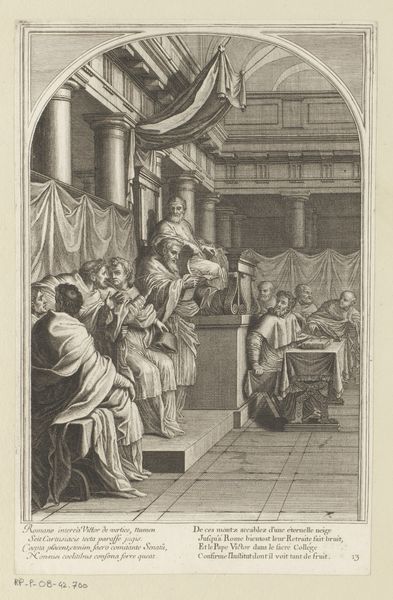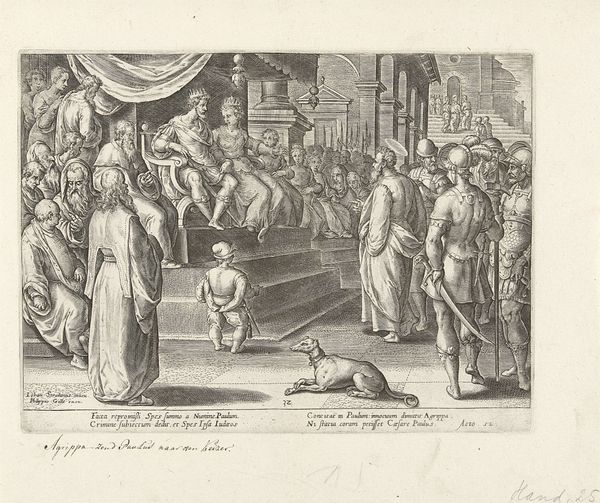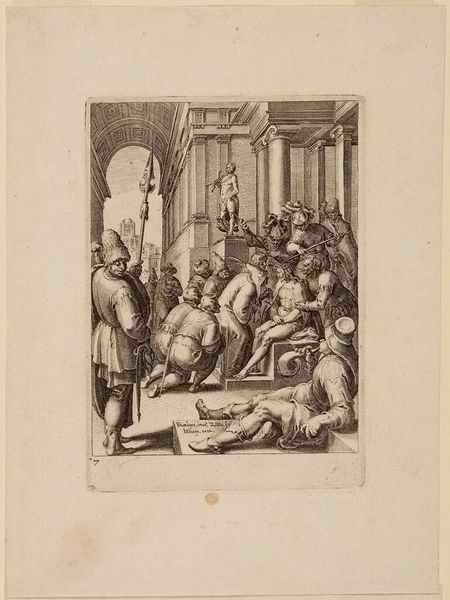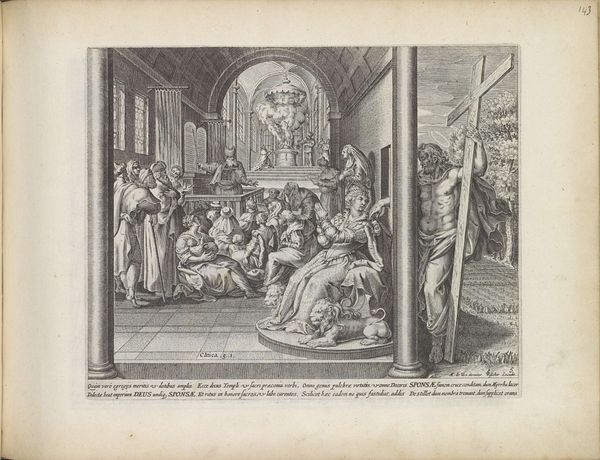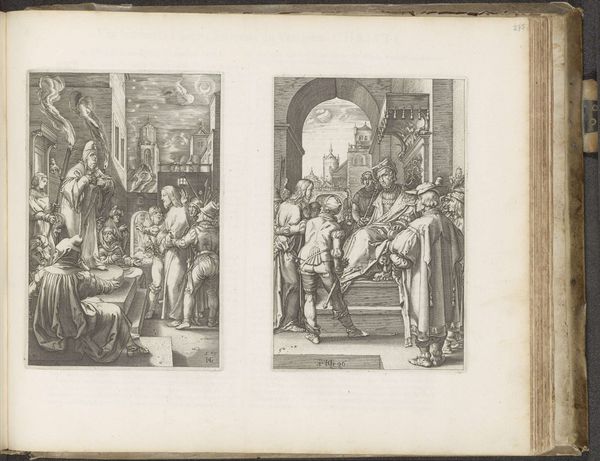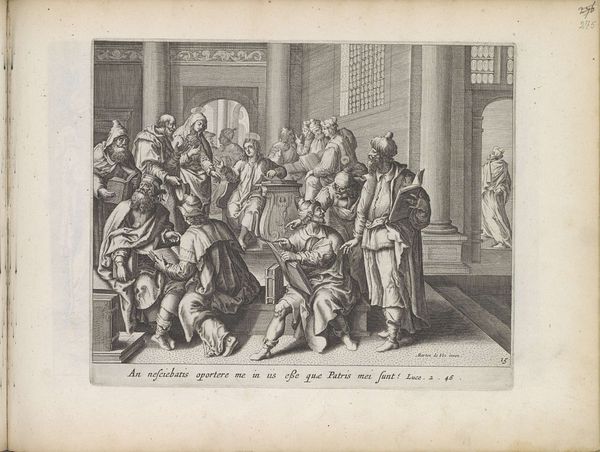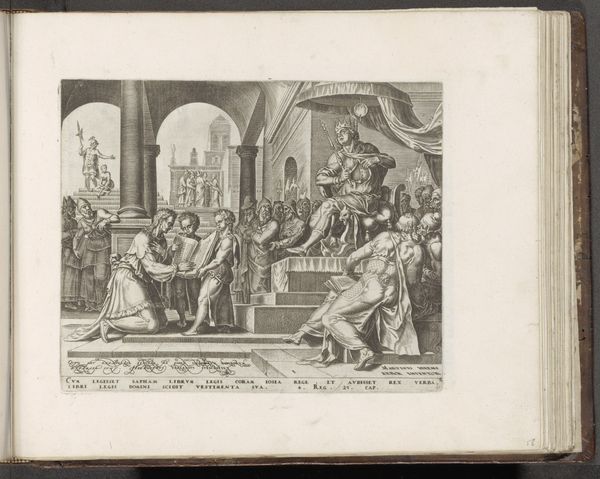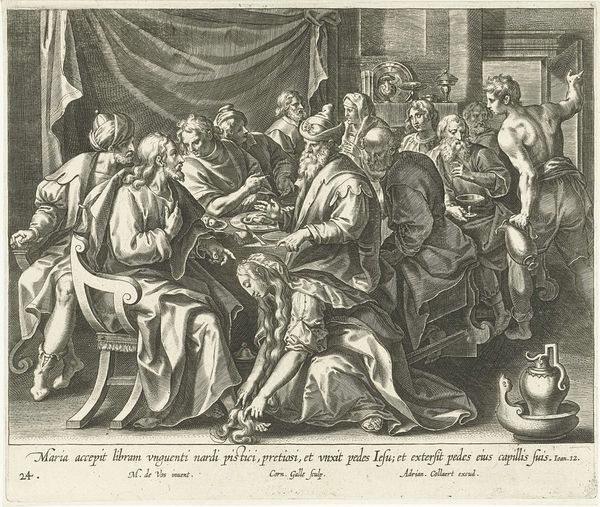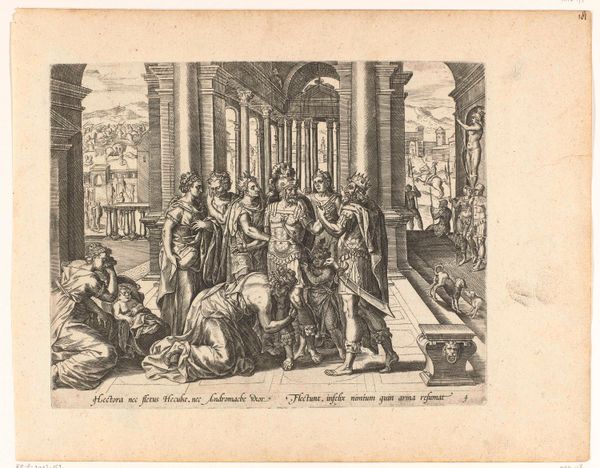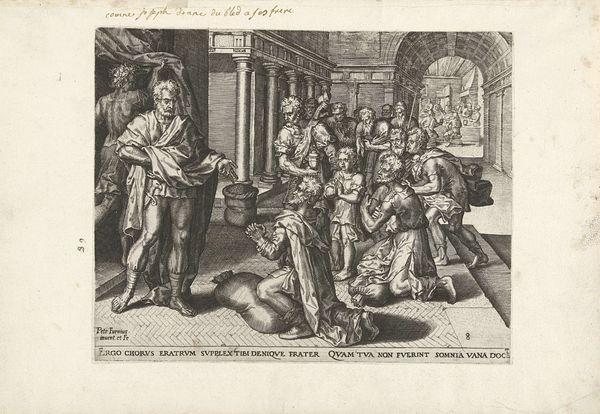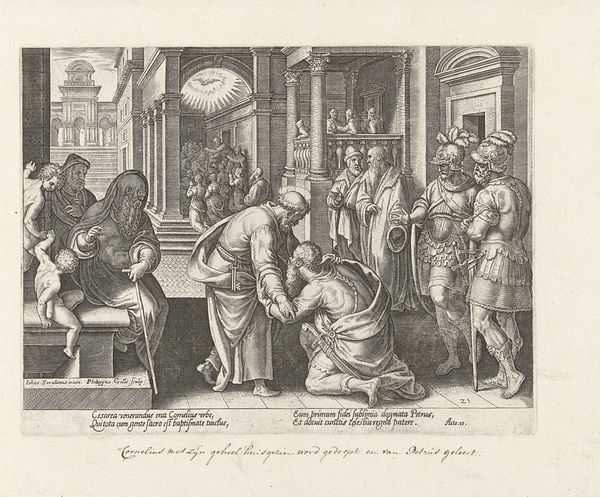
Dimensions: height 193 mm, width 264 mm
Copyright: Rijks Museum: Open Domain
Curator: This image feels weighty, almost oppressive with its intricate details and stark contrasts. What’s going on here? Editor: We're looking at Philips Galle’s "The Foot Washing of St. Peter," an engraving dating back to between 1585 and 1586. Currently, it’s part of the Rijksmuseum's collection. Curator: Ah, that makes sense! There's so much drama packed into a single scene. I am immediately struck by how the linear elements and their distribution create depth and contrast. It’s like I am staring through a narrow lens observing a theater scene where Christ washes Peter's feet amid all those nervous looking apostles, bathed in dramatic candlelight. Editor: Yes, Galle masterfully uses engraving techniques to achieve precisely that sense of depth and to heighten the emotional intensity. The sharp, clean lines define the forms meticulously, yet the overall impression is one of great emotional complexity. Think about how Baroque art leans into the theatrical; the lighting, those expressions. Curator: Absolutely! The use of light almost feels metaphorical. You’ve got Jesus kneeling, bathed in this humble, holy light, contrasting sharply with the darker corners where some of the apostles huddle—almost as if hiding their own uncertainties or failings. Peter seems particularly distressed—squirming—I almost hear a “No, really, don’t.” Editor: It's also important to consider the formal composition itself. Note how Galle frames the scene—the figures are deliberately positioned to guide our eyes towards the central act, but notice how those onlookers at the balustrade are staged up and behind. The lines draw us into that moment. Curator: And even the dog gets a spotlight! Check out the foreground left; there’s this yelping, upset dog like even the pets can feel the tension. I appreciate the mundane realism within the holy happening. This wasn’t some sterile moment. Editor: True. Consider how Galle invites a connection between the divine and human realms in that juxtaposition. This isn't just an image; it's an appeal for moral reflection on faith, obedience, and humanity's place in God's design. Curator: Spot on. Galle takes a story and blows the moment apart into feelings; it leaves an odd aftertaste where the mundane, real and grand ideals of Baroque come crashing together. I may see more there upon repeated reflections. Editor: Precisely! The power of Galle’s engraving rests not just in what is shown, but what it makes us question.
Comments
No comments
Be the first to comment and join the conversation on the ultimate creative platform.
